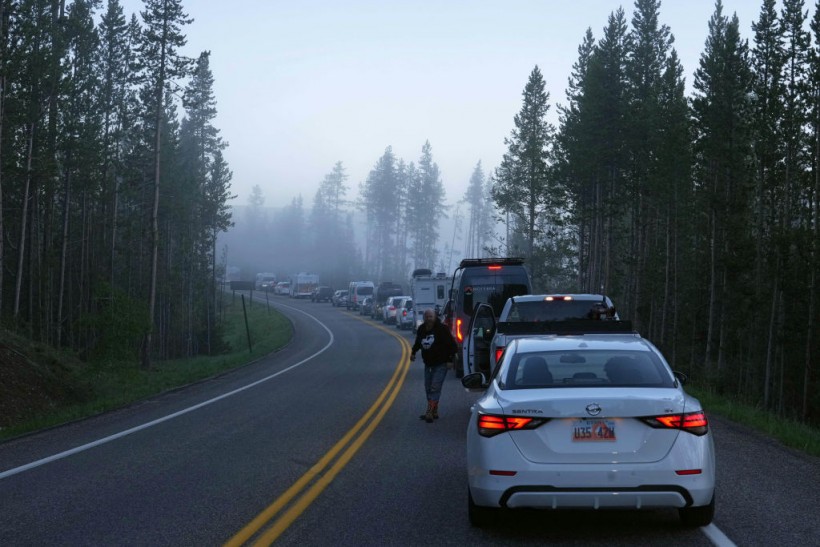(Photo : Photo by George Frey/Getty Images)
It took 46 attempts for Lingenpolter, a young male grizzly bear, to safely cross Interstate 90 highway in Montana, an east-west transcontinental freeway and the longest Interstate Highway in the United States.
Between the fall of 2020 and spring of 2021, the bear with a GPS tracker fitted by researchers has tried to cross the highway a couple of times, but to no avail. At long last, at its 46th attempt (have I mentioned?), the bear luckily crossed the road beneath a bridge north of the town of Drummond.
This obstacle is actually not a rare one, not just for Lingenpolter, but to other animals that happen to pass by as well. In fact, wildlife crossings are common challenges in busy highways, and one among the causes of population fragmenting and decline, CNN reports.
To prevent bears and other wildlife from crossing dangerous highways and avoid risk of being hit by a car, park authorities in Canada have built overpasses and underpasses to provide safe passage for the fluffy pedestrians.
Wildlife Crossings are 'Lifeline' for Canada's Grizzly Bears
Canada's highways present a real barrier to the country's bears and other wildlife, but bridges and underpasses are helping to provide safe passage across the other side, according to Y2Y, an initiative that aims to connect and protect prime habitat from Yellowstone National Park in the US to Yukon in northwestern Canada
According to Jodi Hilty, president and chief scientist of the initiative, "connectivity is vital for a species' survival to sustain their genetics, find the resources they need, and help maintain healthy populations."
The joint Canada-U.S., non-profit organization, aims to harmonize the needs of people with those of nature, and recognize the need for equal opportunities, support human diversity, equity, inclusion; and environmental and social justice.
In response to the growing traffic volume and concerns highway-related wildlife mortality, wildlife crossings are designed to connect vital habitats and allow safe movement of animals across these busy roads, as per Parks Canada.
"When Y2Y started in 1993, there were exactly zero wildlife crossing structures. Today, there are 117," Hilty said.
Also read: Attacks of Two Aggressive Orcas Scare Great White Sharks in South Africa
Effects of the Crossings in and Around the Park
The tourist pour in the region during the summer and intrusion of traffic into the wilderness has led to high numbers of wildlife-vehicle collisions. In a highway where there is no fencing or wildlife crossings, Y2Y has recorded around 70 roadkills per year - and the true number is likely to be far higher as injured animals often move off the road and die later, says Hilty.
To help animals cross and improve safety for people, Jesse Whittington, a wildlife ecologist for Parks Canada, studied the effect of the crossings in and around the park for years using camera traps and radio collars attached to grizzlies and wolves to show how crossings can help to enable long-range movements.
Footages show that animals don't learn where a crossing is immediately, but highway fencing with foundations built two meters underground so animals don't dig under it, helps them funnel towards it and pass this knowledge over time on to their offspring.
Banff National Park and the Y2Y project have set an example for others to follow, says Hilty, with hopes that "our model gets picked up continually, because I think that together we can ensure that both people and nature can thrive," she says.
Related article: Massive Island of Wet Wipes Has Changed the Course of Thames River in London
© 2024 NatureWorldNews.com All rights reserved. Do not reproduce without permission.




![Great White Sharks Observed for the First Time Changing Their Behavior in Different Marine Environments [Study]](https://1471793142.rsc.cdn77.org/data/thumbs/full/70251/280/157/50/40/great-white-sharks-observed-for-the-first-time-changing-their-behavior-in-different-marine-environments-study.jpg)

